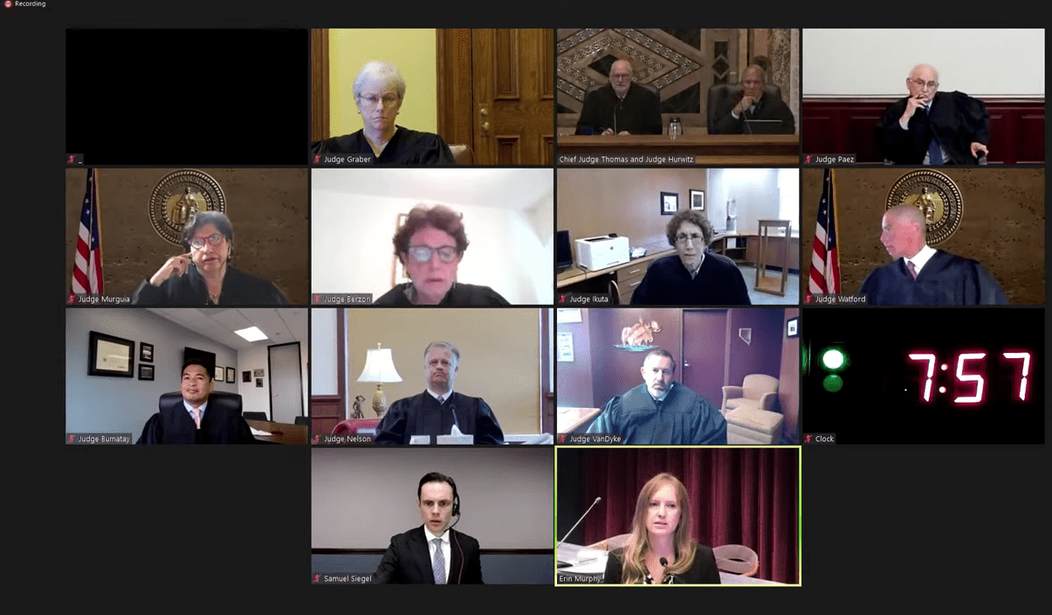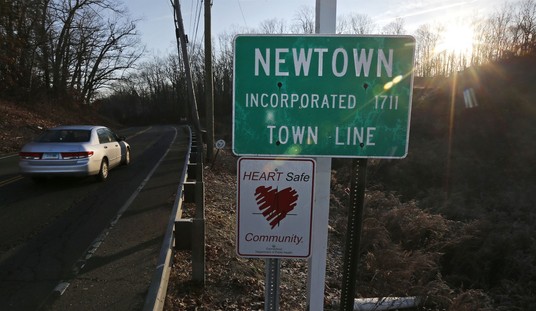For an hour on Tuesday, eleven judges on the Ninth Circuit Court of Appeals waded into the legality of California’s ban on so-called large capacity magazines, as attorneys for the state and gun owners hoping to overturn the law answered pointed questions about existing precedent, the “reasonableness” of the state’s statute, and why the Ninth Circuit should be the first in the country to declare a ban on commonly-owned magazines violates the Constitution.
If you have an hour, I strongly suggest you watch the entire oral arguments, which are available on YouTube.
The state’s argument is pretty simple (and simplistic): the Supreme Court has said that some gun control laws are permissible, we think this law is reasonable, and since no other appellate court has struck down a magazine ban, that must mean that our ban is constitutional… or at least there’s no reason for the Ninth Circuit to break with what other courts have said.
The state was asked how much consideration should be given to the fact that “large capacity magazines” are in common use in states where they’re legal, and the answer from the Cal DOJ attorney was, in essence, “not much.” The position of the state of California is that, since magazines that hold fewer than ten rounds are available for gun owners, it really doesn’t matter how common they might be in other states.
The state also tried to make the case that ownership is less important than “use”, arguing that in the average defensive gun use, fewer than ten rounds are fired, so a ban on larger magazines doesn’t really impact the ability of individuals to defend themselves.
Judge Lawrence Van Dyke, appointed to the Ninth Circuit by President Donald Trump, took issue with that argument however, noting that the average gun owner will never have to use their firearm in self-defense at all. If the state of California’s argument is taken to its logical end, then why have a Second Amendment at all? After all, most people will never need a gun for self-defense, so why should they be allowed to fire even a single round?
The state’s attorney clumsily avoided answering the judge’s question, and instead tried to turn it back on the plaintiffs by declaring that they’d failed to identify a single case where someone was unable to protect or defend themselves because they had to insert a new magazine after firing ten rounds, even after Van Dyke followed up by specifically asking whether or not someone being attacked by a group of people might be better off if they had a magazine that could hold more than ten rounds.
For the last half of the oral arguments, the judges quizzed plaintiff’s attorney Erin Murphy, who began her remarks by pointing out that the Supreme Court has already said that criminal use of any particular arm is no reason or justification to prevent law-abiding citizens from keeping and bearing them. If that were the case, she argued, then the Supreme Court would have ruled very differently in the Heller case, which struck down Washington, D.C.’s ban on handguns, which are the weapon of choice for most criminals.
Judge Ryan Nelson, another Trump appointee, asked Murphy to weigh in on the state’s argument that magazine capacity only became an issue in the 1970s and early 1980s, and therefore it’s worthless to try to examine the history of the Second Amendment in search of support for a ban on “large capacity” magazines. Murphy adeptly handled the query, pointing out that, despite California’s claim, the Winchester Model 1866 had a 17-round capacity with one in the chamber, and was marketed to civilians as being able to shoot all 18 rounds in under 9 seconds. Murphy also noted that as far as detachable magazines are concerned, the Browning Hi-Power pistol, introduced in 1935, came standard with a 13-round magazine, and proved to be so popular that it was only discontinued in 2018.
In other words, if California really wants to argue that its ban imposed in the 1990s (and modified to include currently-owned magazines in 2016) is a “longstanding” gun control law that falls within the scope of the Second Amendment, it needs to address why such a ban wasn’t put in place in the 19th Century, or at least the 1920s or 1930s, when criminals were also using semi-automatic firearms with detachable magazines. Because the state can’t really answer that question, its decided instead to play fast and loose with history.
Murphy was also asked to address the state of California’s claim that the ban, which requires those who legally purchased magazines before the ban was put into effect either destroy them; modify them; hand them over to police; or remove them from the state, doesn’t amount a violation of the Takings Clause of the Constitution because magazine owners can keep them as long as they change them so that they can only accept ten rounds.
“To say that the only way you can keep your property is by essentially permanently modifying it into something other than what you obtained is really no answer at all to the concern that you’re saying you can no longer possess it,” Murphy explained.
“In Horn it was ‘if you don’t want us to take your raisins then turn them into wine,’ in Loretto it was ‘if you don’t want a CATV box on top of your building then stop renting it out to other people,’ and the words that the Court used in both of those opinions is that ‘property rights are not that manipulatable’. I don’t think it’s a matter of how easy it is to alter or destroy your property, it’s a matter of has the state left you with any means through which you can continue to possess what it is that you’ve acquired; and if not, then I think you’d have a physical taking.”
Now, I know I’m biased here, but I really do think that Murphy had the better argument. Not only does she have the Constitution on her side, but she does have history and tradition as well. The state of California, on the other hand, has the precedent of other appellate courts that have upheld similar bans, though only the state of New Jersey has similarly demanded that gun owners turn in, destroy, get rid of, or destroy their existing magazines.
That case is soon to be heard in conference at the Supreme Court, and the Ninth Circuit is likely to hold off on announcing any opinion in Duncan v. Bonta until it hears what SCOTUS has to say, if anything, about the New Jersey ban. In a way, today’s oral arguments could be seen as a preview of the likely issues raised by the justices when they meet to consider accepting the New Jersey case, and my hope is at least four justices agree with Erin Murphy’s argument that these bans on “large capacity” magazines are doubly unconstitutional; first by banning items protected by the Second Amendment and also by violating the Takings Clause.








Join the conversation as a VIP Member